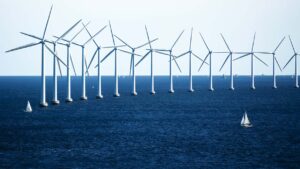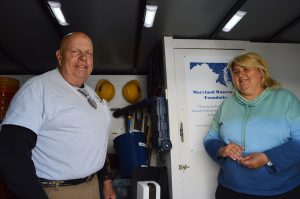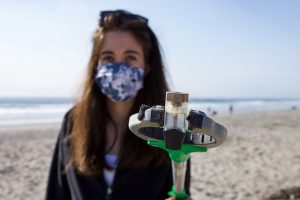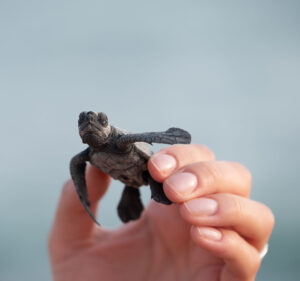
SEA TURTLES ARE FREQUENTLY SEEN as the poster child for marine conservation. They stare out at us from magazines, brochures and billboards, innocent eyes compelling us to be better care takers of our oceans. Sea turtles are more than just a pretty face, they play an important ecological role in our waterways.
Sea turtles are a keystone species, which means they are organisms that have an extremely high impact on a particular ecosystem. If a keystone species is threatened or becomes extinct, an entire ecosystem may be changed or destroyed. Due to their dwindling populations and their keystone designation, all sea turtles in U.S. waters are protected under the Endangered Species Act. Healthy oceans need sea turtles.
VALUABLE CONSUMERS
Green sea turtles are nature’s lawn care. Feasting mainly on seagrass and algae, they keep seagrass beds trimmed, encouraging growth across the sea floor. Sprawling seagrass beds stabilize the sea bottom, provide a breeding ground for numerous species and produce oxygen through photosynthesis.
The hawksbill sea turtle dines on marine sponges and invertebrates. They use their unique beak-like mouth to extract food from coral reefs. The process exposes a food source for other species while also controlling the sponge population. Without consistent pruning, sponges would overgrow coral and suffocate reefs. It is estimated one hawksbill can consume more than 1,000 pounds of sponges each year.
Leatherback sea turtles specialize in eating jellyfish. Consuming twice their rather large body weight in jellyfish each day, leatherbacks keep jellyfish populations in check. Left without such an efficient predator, jellyfish would quickly over- whelm their prey sources, disrupting a food chain that includes plankton, crustacean and fish populations.
VITAL PREY
As hatchlings, sea turtles are a food source for birds, crabs, land mammals and fish. Apex predators such as sharks and orcas rely on adult sea turtles as part of their diet. As prey, sea turtles are a pivotal part of nature’s food web on land and in the sea.
VERY SYMBIOTIC
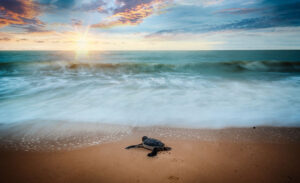
By nesting in coastal sands, turtles inadvertently sustain healthy dunes. Egg shells and unhatched eggs provide nutrients for coastal vegetation, stabilizing dunes and shorelines. The extensive migratory nature of sea turtles makes them efficient vehicles for dispersing populations of other species across large areas.
Barnacles, crustaceans, remoras, algae and microorganisms are frequent hitchhikers on turtle shells. Human activities are the greatest threat to the sea turtle population. Despite legal protections, worldwide enforcement is lacking. Illegal trade of turtle byproducts such as eggs, meat or shells, continues to be problematic. Commercial fisheries pose another threat to the population. Sea turtles are easily captured in nets intended for fish. Known as by-catch, the number of turtles entangled, harmed or killed is unknown, because they are often not reported.
HOW YOU CAN HELP
Recreational boaters can inadvertently create lethal situations for sea turtles. Marine debris, habitat destruction and boat strikes cause injury or death to sea turtles every year. Turtle-friendly boating is easy to accomplish by following just a few guidelines.
Mind what is thrown away or blown away. Ingestion and entanglement of marine debris are significant threats. Many items resemble the sea turtle’s favorite snack, jellyfish. Reducing single-use plastics and properly discarding trash, old fishing lines or nets are key to turtle safety. One small sandwich bag, wind-blown overboard, can cause the death of one turtle. One wayward Mylar balloon can be a death trap for a hungry turtle.
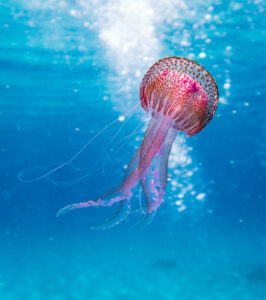
Protect the nests. On shore, be considerate of nesting turtles. The nesting season is usually May through November. Avoid creating hazards for females seeking a safe place to bury eggs or challenges for hatchlings undertaking the long journey back to sea. Limit obstacles for the sea turtles or their hatchlings by removing beach gear at night and filling any holes left behind.
Slow down. It is estimated that hundreds of turtles are struck by boats every year. Turtles need to surface periodically. If they are at the surface, they may be injured when feeding, mating or warming up in the sun. They can swim in bursts of 25 mph but are unlikely to dive quickly enough to avoid being struck.
Look around. Keep an eye out when you see schools of small fish or abundant jellyfish, as turtles are likely nearby seeking a meal. Wear polarized sunglasses to help you see them below the water. Assign someone to specifically keep watch for wildlife.
Keep it deep. Stay in channels when possible. Avoid operating or anchoring in sea grass beds or shallow reefs.
See something, say something. If you encounter a dead, stranded or injured sea turtle, contact wildlife authorities in the area. Numerous organizations around the country are trained and ready to respond. Become familiar with rescue centers near your cruising grounds. For reporting injured marine mammals, you can contact the Coast Guard on VHF channel 16.
Sea turtles gracefully glide through miles of ocean, hauling themselves ashore to nest with uncommon determination. Hatchlings fight their way back to the sea on a journey filled with all manner of danger. More than a pretty face and beyond their ecological contributions, sea turtles invoke awe and inspiration. Healthy oceans need sea turtles and sea turtles need supportive boaters.
TURTLE SHOW & TELL
A great way to meet these inspirational creatures is by visiting a rescue and rehabilitation center. Guided tours of these programs allow you to witness sea turtles up close, learn about their plight and discover ways you can help. Turtle rescue centers and hospitals are often open to the public. Frequently located in coastal areas accessed by boaters, they are an easy addition to your cruising adventures.
Karen Beasley Sea Turtle Rescue & Rehabilitation Center
302 Tortuga Lane, Surf City, NC
seaturtlehospital.org
Georgia Sea Turtle Center
214 Stable Rd., Jekyll Island, GA
gstc.jekyllisland.com
Loggerhead Marinelife Center
14200 U.S. Highway 1, Juno Beach, FL
marinelife.org
Mote Marine Laboratory & Aquarium
1600 Ken Thompson Pkwy., Sarasota FL
mote.org
New England Aquarium
1 Central Wharf, Boston, MA
neaq.org
North Carolina Aquarium, Roanoke Island
374 Airport Rd., Manteo, NC
ncaquariums.com
Sea Turtle Care Center, South Carolina Aquarium
100 Aquarium Wharf, Charleston SC
scaquarium.org
Sea Turtle Preservation Society
111 South Miramar Ave., Indialantic, FL
seaturtlespacecoast.org
Turtle Hospital
2396 Overseas Hwy., Marathon FL
turtlehospital.org


